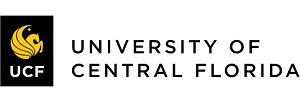 Special to the Philanthropy Journal
Special to the Philanthropy Journal
By Christian King and Gregory B. Lewis
The following resource article is part of an emerging collaboration with Nonprofit and Voluntary Sector Quarterly (NVSQ) to help translate research into practice. The original research article Nonprofit Pay in a Competitive Market: Wage Penalty or Premium? first published on July 13, 2017 and appeared in NVSQ Volume 46, Issue 5, October 2017.
Do nonprofit organizations overpay or underpay their employees? One theory argues that employees choose to accept below-market pay so that they can do meaningful work for organizations whose missions they believe in. Nonprofits might even intentionally underpay workers so that only highly motivated people will apply.
 An opposing theory argues that nonprofits overpay because they have fewer incentives to hold down wages. Nonprofits have tax advantages that private firms do not, meaning that they can create surpluses more easily, and they cannot give any “profits” to owners. Instead, they can share those surpluses with other stakeholders – with customers (through lower costs or higher quality services) and with employees (through higher wages).
An opposing theory argues that nonprofits overpay because they have fewer incentives to hold down wages. Nonprofits have tax advantages that private firms do not, meaning that they can create surpluses more easily, and they cannot give any “profits” to owners. Instead, they can share those surpluses with other stakeholders – with customers (through lower costs or higher quality services) and with employees (through higher wages).
We test these theories by examining the pay – and pay differences by race, gender, and sexual orientation – among registered nurses working for nonprofit, for-profit, and public hospitals.
- The nonprofit sector has higher turnover rates, and one of the most common reasons cited for leaving is the low pay.
- Wage inequality reduces job satisfaction.
- Intrinsically motivated employees care about (wage) equality.
- The nonprofit sector generally has lower wage inequality and higher job satisfaction.
Our Study
To make sure that we were comparing apples-to-apples, we chose a single occupation in a single industry: registered nurses working in hospitals. This made it easier to ensure that any pay differences were due to hospital type rather than differences in the jobs performed. To increase comparability, our statistical models accounted for education, age (as a flawed measure of work experience), location, gender, race, and relationship status (especially whether nurses lived with a same-sex partner).
We looked at how pay levels and wage inequality varied across nonprofit, for-profit, and public hospitals using Census data on 90,000 registered nurses. (Data came the 2005-2013 American Community Survey. All nurses worked fulltime and were 21- to 65-years-old.)
What did we find?
- Average pay was highest in nonprofit hospitals.
- Nurses in nonprofit hospitals were better-educated and more experienced, which partly justified their higher pay.
- Even after correcting for differences in education and experience, however, nurses in nonprofit hospitals earned 4% more than comparable nurses in for-profit hospitals and 3% more than those in public hospitals.
- Even though 90% of the nurses were women, men made 10% more than comparable women.
- Whites made 10% more than comparable Blacks and Hispanics.
- Sexual orientation did not seem to matter, however. Men with male partners earned the same as comparable married men, and women with female partners earned 3.5% more than comparable married women.
- Surprisingly, wage disparities were the highest in nonprofit hospitals and lowest in public hospitals.
Why should you care?
Although most nonprofit employees and scholars think that nonprofits underpay their employees, we find that nonprofit hospitals actually pay registered nurses more than for-profit hospitals. Nonprofit hospitals appear to share their surplus with two key stakeholders. Patients get somewhat better-educated, more experienced nurses. Nurses get somewhat higher pay.
This suggests that, at least among registered nurses working for hospitals, nonprofit tax advantages and restrictions on owners retaining profits overwhelm the “donative labor hypothesis”: nonprofits pay better than their for-profit competitors.
Although most nurses are women and although nursing employs more Blacks than most professions, white men continue to earn more than comparably educated and experienced women and minorities. Gay and lesbian nurses, however, earn as much as their married counterparts.
In contrast to research suggesting that the nonprofit sector prioritizes wage equality, we find that racial and gender pay disparities are actually bigger in the nonprofit sector, at least among registered nurses working for hospitals.
That caveat is an important one, and we caution against generalizing to the entire nonprofit sector. Nursing is a caring profession, and nurses can rightfully feel they are benefiting society in any type of hospital. (For-profit hospitals, however, do tend to specialize in more profitable services than non-profit hospitals do, so more altruistic nurses may find the missions of nonprofits more meaningful.) The labor market for nurses is highly competitive, but pay is not especially high. In these circumstances, the marginal advantage to the nonprofit mission may not be large enough to cause nurses to choose mission over pay.
Christian King is an assistant professor in the Department of Health Management and Informatics at the University of Central Florida. His research focuses on examining factors that contribute to social inequalities and health disparities.
Gregory B. Lewis is a professor and chair of the Department of Public Management and Policy at the Andrew Young School of Policy Studies at Georgia State University. His research has focused on career patterns of public employees, diversity issues, support for gay and lesbian rights, patterns of employment in public and nonprofit sectors, and gay–straight pay differences within sectors.







